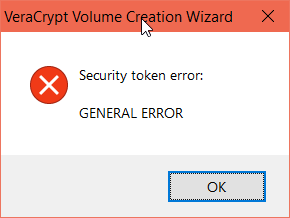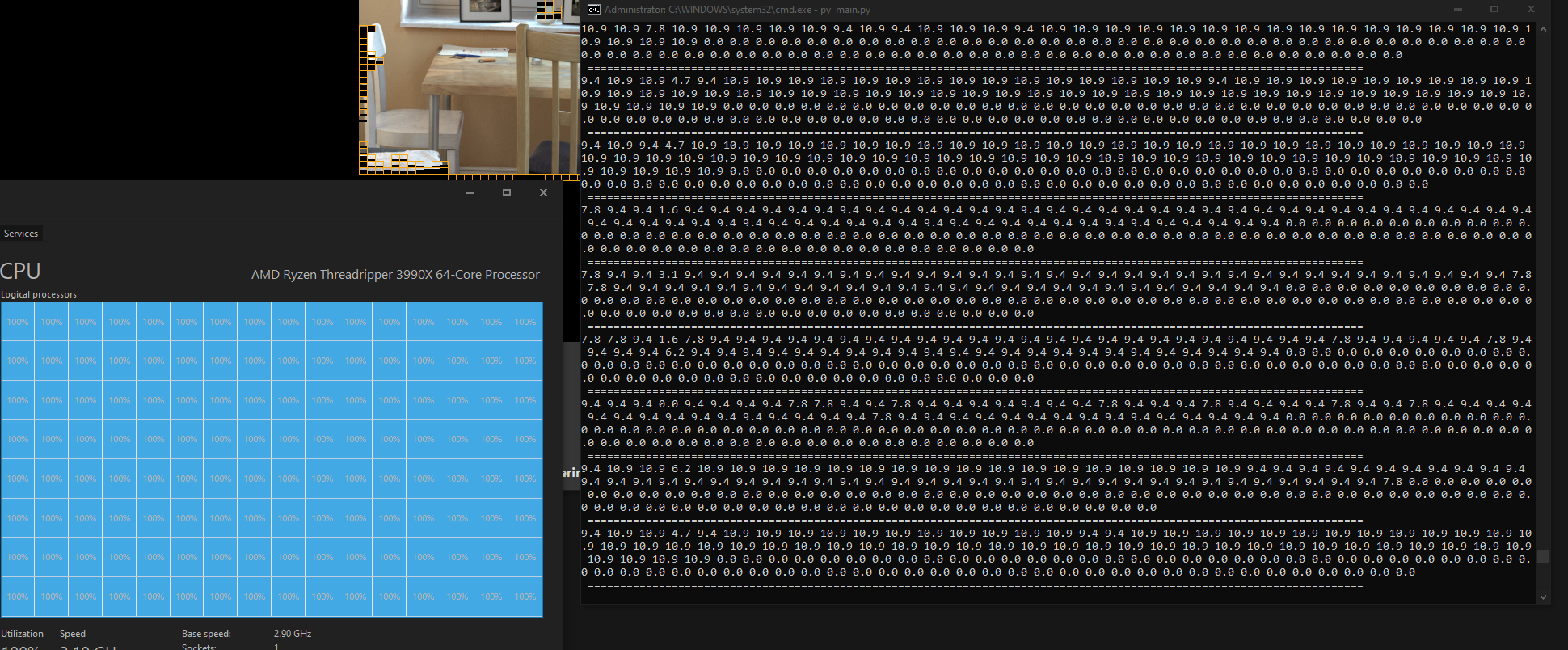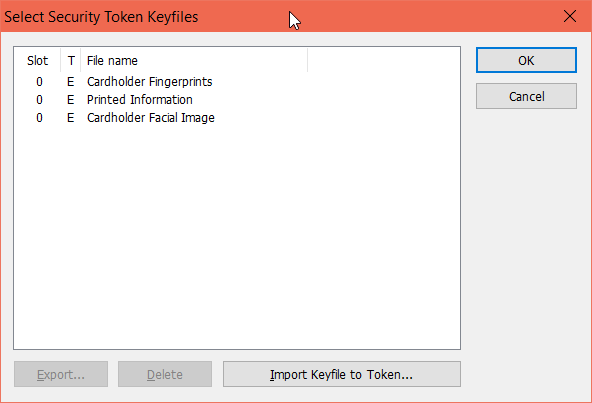Openssl Failed To Enumerate Slots
Failed To Enumerate Slots There are always hundreds of slots and many other games available and you don't Failed To Enumerate Slots even need to change out of your pajamas to enjoy them. It saves the plane journey to Las Vegas! Call-back data passed by the OpenSSL from an application are application specific data opaque to an engine. + fail0('failed to enumerate slots ').
- Openssl Failed To Enumerate Slots Software
- Openssl Pkcs11 Failed To Enumerate Slots
- Openssl Failed To Enumerate Slots Games
- Openssl Failed To Enumerate Slots List

by Alexey Samoshkin
Most common OpenSSL commands and use cases
When it comes to security-related tasks, like generating keys, CSRs, certificates, calculating digests, debugging TLS connections and other tasks related to PKI and HTTPS, you’d most likely end up using the OpenSSL tool.
OpenSSL includes tonnes of features covering a broad range of use cases, and it’s difficult to remember its syntax for all of them and quite easy to get lost. man pages are not so helpful here, so often we just Google “openssl how to [use case here]” or look for some kind of “openssl cheatsheet” to recall the usage of a command and see examples.
This post is my personal collection of openssl command snippets and examples, grouped by use case.
Use cases
Here is a list of use cases, that I’ll be covering:
Surely, this is not a complete list, but it covers the most common use cases and includes those I’ve been working with. For example, I skip encryption and decryption, or using openssl for CA management. openssl is like a universe. You never know where it ends. ?
Working with RSA and ECDSA keys
In the commands below, replace [bits] with the key size (For example, 2048, 4096, 8192).
Generate an RSA key:openssl genrsa -out example.key [bits]
Print public key or modulus only:openssl rsa -in example.key -puboutopenssl rsa -in example.key -noout -modulus
Print textual representation of RSA key:openssl rsa -in example.key -text -noout
Generate new RSA key and encrypt with a pass phrase based on AES CBC 256 encryption:openssl genrsa -aes256 -out example.key [bits]
Check your private key. If the key has a pass phrase, you’ll be prompted for it:openssl rsa -check -in example.key
Remove passphrase from the key:openssl rsa -in example.key -out example.key
Encrypt existing private key with a pass phrase:openssl rsa -des3 -in example.key -out example_with_pass.key
Generate ECDSA key. curve is to be replaced with: prime256v1, secp384r1, secp521r1, or any other supported elliptic curve:openssl ecparam -genkey -name [curve] openssl ec -out example.ec.key
Print ECDSA key textual representation:openssl ec -in example.ec.key -text -noout
List available EC curves, that OpenSSL library supports:openssl ecparam -list_curves
Generate DH params with a given length:openssl dhparam -out dhparams.pem [bits]
Create certificate signing requests (CSR)
In the commands below, replace [digest] with the name of the supported hash function: md5, sha1, sha224, sha256, sha384 or sha512, etc. It’s better to avoid weak functions like md5 and sha1, and stick to sha256 and above.
Create a CSR from existing private key.openssl req -new -key example.key -out example.csr -[digest]
Create a CSR and a private key without a pass phrase in a single command:openssl req -nodes -newkey rsa:[bits] -keyout example.key -out example.csr
Provide CSR subject info on a command line, rather than through interactive prompt.openssl req -nodes -newkey rsa:[bits] -keyout example.key -out example.csr -subj '/C=UA/ST=Kharkov/L=Kharkov/O=Super Secure Company/OU=IT Department/CN=example.com'
Create a CSR from existing certificate and private key:openssl x509 -x509toreq -in cert.pem -out example.csr -signkey example.key
Generate a CSR for multi-domain SAN certificate by supplying an openssl config file:openssl req -new -key example.key -out example.csr -config req.conf
where req.conf:
Create X.509 certificates
Create self-signed certificate and new private key from scratch:openssl req -nodes -newkey rsa:2048 -keyout example.key -out example.crt -x509 -days 365
Create a self signed certificate using existing CSR and private key:openssl x509 -req -in example.csr -signkey example.key -out example.crt -days 365
Sign child certificate using your own “CA” certificate and it’s private key. If you were a CA company, this shows a very naive example of how you could issue new certificates.openssl x509 -req -in child.csr -days 365 -CA ca.crt -CAkey ca.key -set_serial 01 -out child.crt

Print textual representation of the certificateopenssl x509 -in example.crt -text -noout
Print certificate’s fingerprint as md5, sha1, sha256 digest:openssl x509 -in cert.pem -fingerprint -sha256 -noout
Verify CSRs or certificates
Verify a CSR signature:openssl req -in example.csr -verify
Verify that private key matches a certificate and CSR:openssl rsa -noout -modulus -in example.key openssl sha256openssl x509 -noout -modulus -in example.crt openssl sha256openssl req -noout -modulus -in example.csr openssl sha256
Verify certificate, provided that you have root and any intemediate certificates configured as trusted on your machine:openssl verify example.crt
Verify certificate, when you have intermediate certificate chain. Root certificate is not a part of bundle, and should be configured as a trusted on your machine.openssl verify -untrusted intermediate-ca-chain.pem example.crt
Verify certificate, when you have intermediate certificate chain and root certificate, that is not configured as a trusted one.openssl verify -CAFile root.crt -untrusted intermediate-ca-chain.pem child.crt
Verify that certificate served by a remote server covers given host name. Useful to check your mutlidomain certificate properly covers all the host names.openssl s_client -verify_hostname www.example.com -connect example.com:443
Calculate message digests and base64 encoding
Calculate md5, sha1, sha256, sha384, sha512digests:openssl dgst -[hash_function] <input.filecat input.file openssl [hash_function]
Base64 encoding and decoding:cat /dev/urandom head -c 50 openssl base64 openssl base64 -d
TLS client to connect to a remote server
Connect to a server supporting TLS:openssl s_client -connect example.com:443openssl s_client -host example.com -port 443
Connect to a server and show full certificate chain:openssl s_client -showcerts -host example.com -port 443 </dev/null
Extract the certificate:openssl s_client -connect example.com:443 2>&1 < /dev/null sed -n '/-----BEGIN/,/-----END/p' > certificate.pem
Override SNI (Server Name Indication) extension with another server name. Useful for testing when multiple secure sites are hosted on same IP address:openssl s_client -servername www.example.com -host example.com -port 443
Test TLS connection by forcibly using specific cipher suite, e.g. ECDHE-RSA-AES128-GCM-SHA256. Useful to check if a server can properly talk via different configured cipher suites, not one it prefers.openssl s_client -host example.com -port 443 -cipher ECDHE-RSA-AES128-GCM-SHA256 2>&1 </dev/null
Measure TLS connection and handshake time
Measure SSL connection time without/with session reuse:openssl s_time -connect example.com:443 -newopenssl s_time -connect example.com:443 -reuse
Roughly examine TCP and SSL handshake times using curl:curl -kso /dev/null -w 'tcp:%{time_connect}, ssldone:%{time_appconnect}n' https://example.com
Measure speed of various security algorithms:openssl speed rsa2048openssl speed ecdsap256
Convert between encoding and container formats
Convert certificate between DER and PEM formats:openssl x509 -in example.pem -outform der -out example.deropenssl x509 -in example.der -inform der -out example.pem
Combine several certificates in PKCS7 (P7B) file:openssl crl2pkcs7 -nocrl -certfile child.crt -certfile ca.crt -out example.p7b
Convert from PKCS7 back to PEM. If PKCS7 file has multiple certificates, the PEM file will contain all of the items in it.openssl pkcs7 -in example.p7b -print_certs -out example.crt
Combine a PEM certificate file and a private key to PKCS#12 (.pfx .p12). Also, you can add a chain of certificates to PKCS12 file.openssl pkcs12 -export -out certificate.pfx -inkey privkey.pem -in certificate.pem -certfile ca-chain.pem
Convert a PKCS#12 file (.pfx .p12) containing a private key and certificates back to PEM:openssl pkcs12 -in keystore.pfx -out keystore.pem -nodes
List cipher suites
List available TLS cipher suites, openssl client is capable of:openssl ciphers -v
Enumerate all individual cipher suites, which are described by a short-hand OpenSSL cipher list string. This is useful when you’re configuring server (like Nginx), and you need to test your ssl_ciphers string.openssl ciphers -v 'EECDH+ECDSA+AESGCM:EECDH+aRSA+SHA256:EECDH:DHE+AESGCM:DHE:!RSA!aNULL:!eNULL:!LOW:!RC4'
Manually check certificate revocation status from OCSP responder
This is a multi-step process:
- Retrieve the certificate from a remote server
- Obtain the intermediate CA certificate chain
- Read OCSP endpoint URI from the certificate
- Request a remote OCSP responder for certificate revocation status
First, retrieve the certificate from a remote server:openssl s_client -connect example.com:443 2>&1 < /dev/null sed -n '/-----BEGIN/,/-----END/p' > cert.pem
You’d also need to obtain intermediate CA certificate chain. Use -showcerts flag to show full certificate chain, and manually save all intermediate certificates to chain.pem file:openssl s_client -showcerts -host example.com -port 443 </dev/null
Read OCSP endpoint URI from the certificate:openssl x509 -in cert.pem -noout -ocsp_uri
Request a remote OCSP responder for certificate revocation status using the URI from the above step (e.g. http://ocsp.stg-int-x1.letsencrypt.org). openssl ocsp -header 'Host' 'ocsp.stg-int-x1.letsencrypt.org' -issuer chain.pem -VAfile chain.pem -cert cert.pem -text -url http://ocsp.stg-int-x1.letsencrypt.org
Resources
I’ve put together a few resources about OpenSSL that you may find useful.
OpenSSL Essentials: Working with SSL Certificates, Private Keys and CSRs DigitalOcean — https://www.digitalocean.com/community/tutorials/openssl-essentials-working-with-ssl-certificates-private-keys-and-csrs
The Most Common OpenSSL Commands — https://www.sslshopper.com/article-most-common-openssl-commands.html
OpenSSL: Working with SSL Certificates, Private Keys and CSRs — https://www.dynacont.net/documentation/linux/openssl/
The Failed to Enumerate Objects in the Container.Access is denied error in Windows 10 is a very common error that users face while dealing with file or folder permissions. Windows allows us to share a folder or file with multiple users over a local network. As an Administrator, when you try to change access permission to some folders for users or user groups, this Failed to Enumerate Objects in the Container error may show up.
The reasons why this error could show up? There are two main reasons that lead to Failed to Enumerate Objects in the Container Windows 10 issue. It could arise either because of a clash in file or folder permissions or because of some folder settings that could be configured incorrectly.
How to fix Failed to Enumerate Objects in the Container error?
Fortunately, the steps to get this issue resolved are convenient and simple. Some basic tweaks in Windows settings, and you will be all set to assign user permissions to a folder easily. Let’s check them out.
Fix 1 – Using elevated command prompt
1. Search cmd in command prompt window.
2. Right click on command prompt icon and run as administrator.
3. Now, copy and paste the commands given below in the command prompt window and execute the commands one by one.
Make sure to change FULL_PATH_TO_FOLDER with the path of the your folder.
Fix 2 – Change Folder Ownership
This is so far the best and only method suggested by Microsoft as well as Windows experts. Changing folder ownership has been recommended by Windows users as well, as this method solves the Failed to Enumerate Objects in the Container. Access is denied error like a charm. Here are the steps involved to change folder ownership in Windows:
Step 1: Make a right click on the folder for which you are getting Failed to Enumerate Objects in the Container error while changing user permissions. From the right-click menu, select the Properties option.
Step 2: In the Folder Properties window that opens, go to the Security tab. When in Security tab, click on the Advanced option.
Step 3: This will open a new Advanced Security Settings window. Here, in the top section, right below the Name section, click on the Change option in the Owner section.
Step 4: In the next screen, you will need to enter your Windows account’s username through which you log in. You can simply enter your username in the Enter the object name to select box, then click on Check Names button to quickly find your correct username. Click On OK.
Note: – If you were unable to find out your username with this method, click on the Advanced button below the text box to select your username from the list of all users.In the Advanced window, click on Find now button, a list of all usernames will be populated at the bottom of this window named “Select user and group”. From the list, you can set your username. After selecting your username, click on the Ok button.
Step 5: After you have selected the username and are back to the Advanced screen, two new check mark options will appear, “Replace owner on sub containers and objects” and “Replace all child object permission entries with inheritable permission entries from this object“, which I have shown in the screenshot below. Select both these options, then click on OK. Again Click on OK for the Prompt which just Popped Up.

Step 6: Now, again come to the same screen by clicking on Advanced on Security Tab.
Step 7: – Now, Click on Add.
Step 8: – Now, Click On select a Prinicipal.

Step 9: – Now write Everyone and Click on Check names. Click on OK.
Step 10: – Click on OK to exit the Screen.
Now, close down all the windows, and try to set folder permissions again. This step will most probably solve the problem, and you won’t get the Failed to Enumerate Objects in the Container error. In case you do, there is one more thing that you can try.
Fix 3 – Suppress Warnings to fix Failed to Enumerate Objects in the Container error
By accessing the User Account Control Settings, you can disable the notification option, which in turn, will allow you to make changes to the folder permissions without showing any pop-up or notification. In order to be able to change folder permissions successfully using this method, follow these steps:
Step 1: Open the Start menu, and in the Start search bar, type UAC or Change User Account Control Settings. This will show the Change User Account Control Settings option in the search result; open it.
Step 2: Here, you will see a slider. Drag the slider all the way down to Never notify. When done, click on the Ok button. If prompted by a dialogue box for permission, press Yes.
After doing so, restart your PC. Once restarted, try to set folder permissions.
Openssl Failed To Enumerate Slots Software
Now, you will be able to set the permission for the folder very easily.
Still getting the Failed to Enumerate Objects in the Container error while changing folder permissions? Try restarting your PC in Safe Mode and repeat the Method #1, and see if you are able to carry out the process successfully. If Safe Mode doesn’t work, try doing the same in Safe Mode with Networking.
Openssl Pkcs11 Failed To Enumerate Slots
Note: To boot your PC in Safe Mode, shut down your computer and start it again. As soon as the PC startups, keep pressing the F8 key on repeat (with an interval of 1 second). You will get boot options, such as Safe Mode and Safe Mode with Networking. Select the one according to the requirement and carry out the given methods.
Finally,
Openssl Failed To Enumerate Slots Games
If nothing works, you might wanna start fresh. Create a new folder, add files, and then set folder permissions for other users. And, do not forget to tell us if this worked for you or not.